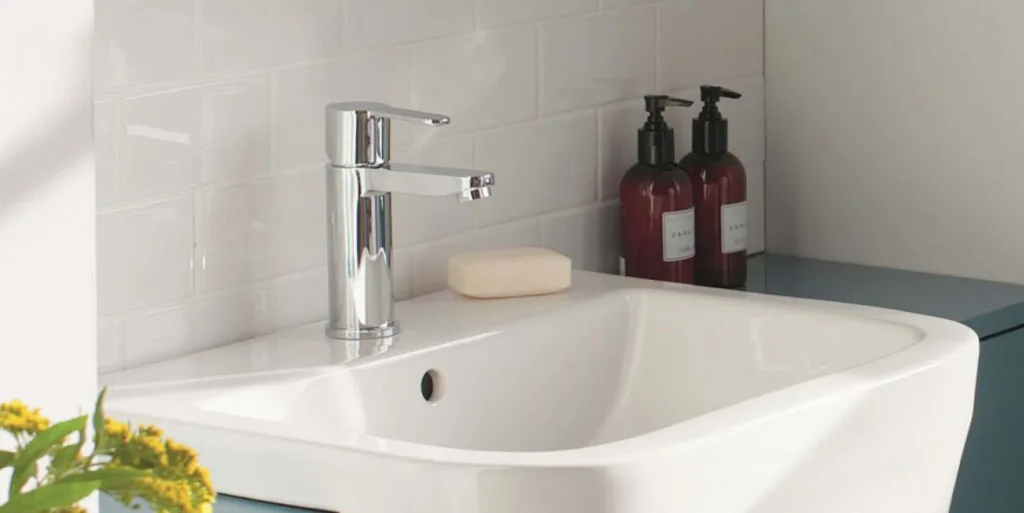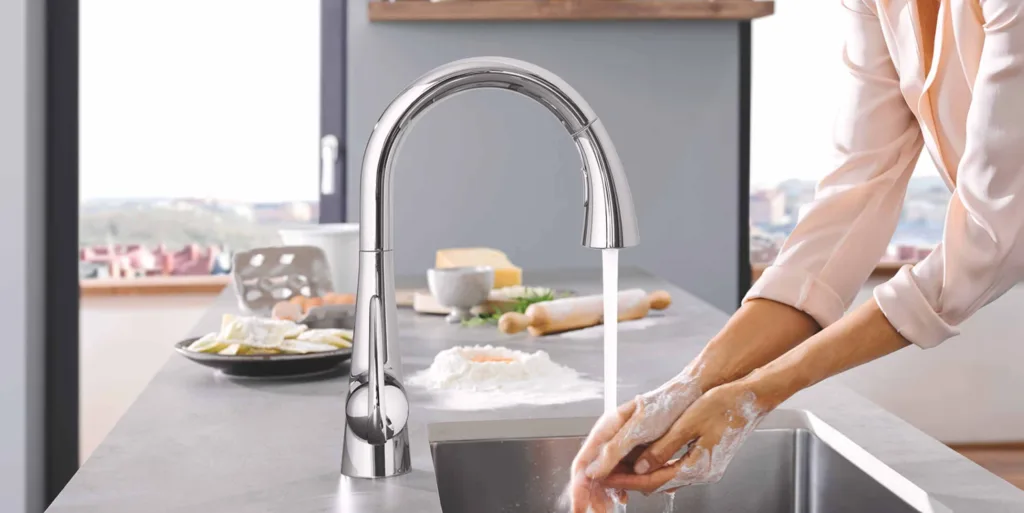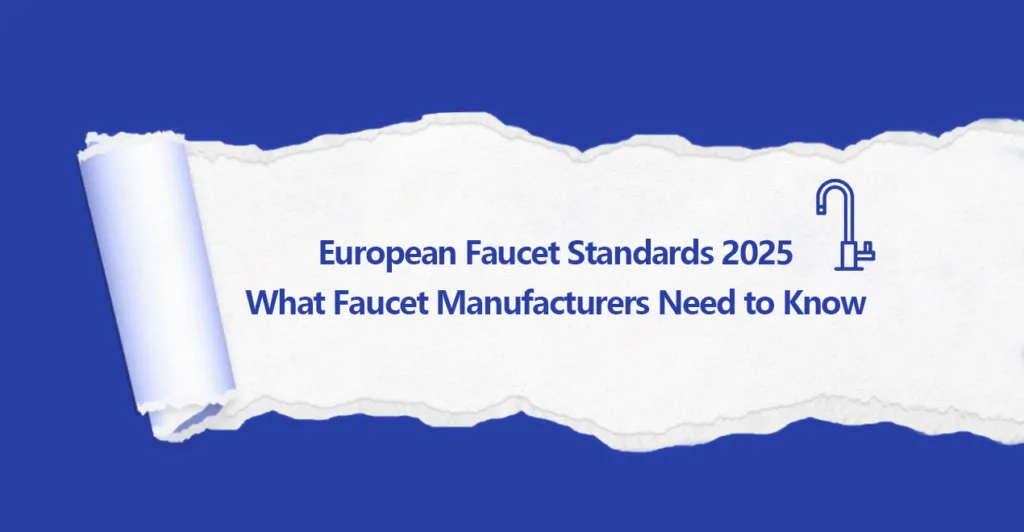European Faucet Standards 2025: What Faucet Manufacturers Need to Know
Meta Description
Discover the 2025 update on European faucet standards – from EN 200 and water-efficiency criteria to CE marking challenges and national certifications. A must-read for faucet manufacturers.
Introduction
The European market continues to enforce stricter requirements on sanitary products, including faucets, taps, valves and fittings. For manufacturers and exporters—especially those outside Europe—understanding the latest European faucet standards is no longer optional but essential for market access and competitiveness. As we move into 2025, key changes in regulation, certification and environmental criteria are reshaping the faucet industry.
Whether you export kitchen faucets, basin mixers or shower tapware, aligning with faucet certification EU requirements ensures your products remain market-ready, credible and trusted.
Why European Faucet Standards Matter

Europe’s standards serve several purposes: protecting public health, ensuring water efficiency, promoting sustainability, and enabling fair competition. For tapware and sanitary fittings, compliance means manufacturers can legitimately sell their products in European member states, reassure distributors and end-users, and avoid regulatory roadblocks.
A study of faucet certification EU shows that faucets with recognized compliance perform better in B2B tendering, project specification and export negotiations. Understanding the right standards—from EN 200 (Sanitary tapware – single taps) to Green Public Procurement (GPP) criteria—gives manufacturers a competitive advantage.
Key Regulations & Standards to Know
1. Sanitary Tapware Standards: EN Series
The European Committee for Standardization (CEN) has published numerous EN standards relevant to faucets. Examples include:
EN 200 – Sanitary tapware: single taps and combination taps for water supply. susproc.jrc.ec.europa.eu+1
EN 817 – Mechanical mixing valves – general technical specifications. lf-technologies.com
EN 15091 – Electronic opening & closing sanitary faucets. lf-technologies.com+1
These standards define performance, durability and safety criteria. Though not always harmonised for CE marking in every market, they provide vital benchmarks for faucet certification EU.
2. CE Marking & Construction Products Regulation (CPR)
Under EU Regulation No 305/2011 (Construction Products Regulation, CPR), certain building-related products require CE marking. However, taps and fittings pose complex cases. According to a recent review, many tapware items are not covered by harmonised EN standards and therefore technically may not bear CE mark unless a specific directive applies. idral.it
Manufacturers must create a technical file, conduct testing and issue a Declaration of Performance if required.
3. Water & Environmental Efficiency: GPP Criteria
The EU GPP (Green Public Procurement) criteria for sanitary tapware provide voluntary but influential standards for water and energy efficiency. For example:
Maximum flow rates for kitchen taps: 8 l/min (with flow-limiting device) susproc.jrc.ec.europa.eu
For basin taps: 7 l/min, etc.
Public contracts increasingly request compliance with GPP criteria, making it a valuable marketing point in Europe.
4. Emerging Regulations & Material Restrictions
Recent reports highlight proposals by the EU to ban certain chrome-plated materials due to toxic hexavalent chromium and push toward sustainable surface finishes.
Additionally, regulatory updates on CE marking (2024-2025) emphasise stricter technical file requirements, longer certification validity periods and stronger import checks. sertifike.com
Critical Requirements for Faucet Manufacturers

To succeed in the European market, faucet manufacturers must focus on the following:
Material Safety & Lead-Free Compliance
Materials in contact with drinking water must restrict heavy metal migration (lead, cadmium, nickel). Standards like EN 15664 (in development) cover metallic materials’ influence on drinking water. susproc.jrc.ec.europa.eu
Even if harmonised standards are pending, European buyers expect low-lead or lead-free faucet bodies and internal parts.
Flow Rate & Water Efficiency
Meeting GPP flow-rate limits is increasingly demanded. For kitchen and basin tapware, manufacturers need to optimise internal hydraulics or incorporate flow-limiting aerators. Compliances with faucet certification EU in this area adds market value.
Durability, Corrosion & Finish Quality
Tapware must resist corrosion (especially in stainless-steel or brass construction), hold finish integrity (e.g., > 96 hours salt spray), and perform mechanical life-cycle tests. Good finish and durability are important for premium European segment.
Documentation & Traceability
Manufacturers must maintain technical files: test reports, material certificates, manufacturing process details, batch traceability. For CE or certification purposes, and for distributor/supplier credibility, these documents matter.
Certification & Market Recognition
While CE marking may not always apply, national certifications (France – ACS, Germany – DVGW, UK – WRAS, NL – Kiwa) are used widely in Europe. Showing evidence of compliance with faucet certification EU builds trust with buyers and project specifiers.
Challenges & How to Address Them
Harmonisation is incomplete

Europe lacks fully harmonised standards for all tapware types. As noted, “the technical standards governing taps and fittings are not harmonised” so CE marking may not always apply. idral.it
Manufacturers should treat multiple national certifications as de-facto standards.
Evolving regulatory landscape
With upcoming bans (chrome plating), stricter material controls and revamped CE procedures, manufacturers must stay alert.
Use this change as an opportunity: promoting “chrome-free finishes” or “eco-friendly surface treatments” can differentiate your product.
Cost vs. Compliance
Additional testing, documentation and redesign carry cost. To mitigate, align with markets with recurring demand (renovation cycle), adopt modular testing strategies and plan ahead.
Strategic Opportunities for Manufacturers
Lead-Free & Water-Saving Designs – Promote models meeting European GPP criteria (lower flow rate, efficient aerators).
Eco-Finishes & Premium Materials – Stainless steel, brushed finishes, gunmetal or nickel-free plating appeal to premium European consumers.
Target Public Procurement – Design a product line with full documentation and certification that qualifies for European public tenders.
Leverage National Certifications – Even without CE, if your tapware is ACS or WRAS certified you gain access to France/UK distribution networks.
Highlight Compliance in Marketing – Use keywords like European faucet standards, faucet certification EU, lead-free faucet Europe in your digital content to attract project specifiers and B2B buyers.
Conclusion
In 2025 and beyond, the landscape of European faucet standards is shifting noticeably — towards safer materials, higher efficiency, traceable documentation and sustainability. For manufacturers and exporters, aligning with European faucet standards means more than ticking boxes: it means building brand credibility, securing distribution channels, and gaining access to premium projects.
If you export kitchen faucets, basin mixers or shower tapware to Europe, now is the time to act: review your materials, obtain relevant certifications, update technical files and embrace the language of compliance in your marketing. Doing so ensures your company will not only meet faucet certification EU requirements but will also stand out in a discerning and regulated market.

